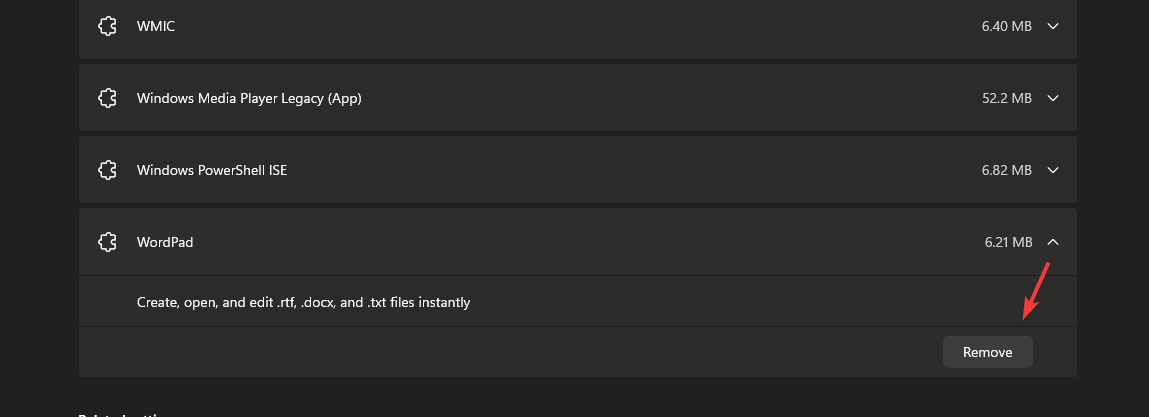How to Restore Missing WordPad in Windows?
If WordPad is missing from your computer, it may be due to Microsoft’s decision to remove it from Windows. Starting with Windows 11, version 24H2, WordPad is no longer included in the operating system. Microsoft recommends using Microsoft Word for rich text documents such as .doc and .rtf, while Notepad is suggested for plain text files like .txt.

If you still want to use WordPad, you can manually restore it by retrieving the necessary files from an older version of Windows.
Below are multiple methods to help you bring back WordPad.
1. Reinstall WordPad via Optional Features
- Press the Windows key to open the Windows Search bar.
- Type Optional Features and press Enter to open the settings.

- Look for WordPad under the Installed Features section. If it’s listed, expand the option and click Remove.

- If WordPad is not listed, click View Optional Features at the top and scroll down to locate it.
- Select WordPad and click Next to proceed.

- Click Add to confirm the installation.

- Once the installation is complete, check if WordPad is now accessible on your computer.
2. Use PowerShell to Reinstall WordPad
- Open the Start Menu and search for Windows PowerShell.
- Right-click on it and select Run as Administrator.

- In the PowerShell window, type the following command and press Enter:
Add-WindowsCapability -Online -Name "Microsoft.Windows.WordPad~~~~0.0.1.0"

- Once the process completes, WordPad should be restored and accessible on your computer.
3. Restore WordPad from a Previous Windows Installation
If you recently upgraded Windows, the old WordPad files might still be stored in the Windows.old directory. You can restore WordPad by copying these files to their original location. Here’s how:
- Press Windows + E to open File Explorer.
- Navigate to the following directory:
C:\Windows.old\Program Files\Windows NT\Accessories - Locate and copy the files wordpad.exe and WordpadFilter.dll.
- Paste these files into the directory:
C:\Program Files\Windows NT\Accessories
- Once the files are copied, double-click wordpad.exe to launch WordPad.
4. Install Alternative Text Editors
If WordPad cannot be restored, consider using an alternative text editor. Here are some recommendations:
- Notepad – A lightweight, built-in alternative for basic text editing.
- LibreOffice Writer – A free, feature-rich alternative similar to Microsoft Word.
- Notepad++ – A powerful text editor with extended features for advanced users.
- Microsoft Word – The official replacement recommended by Microsoft.





